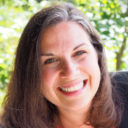I arrived late to the ERNOP conference last week. A bit frazzled from the unusually hot weather in Basel, I was met at the ERNOP Registration desk by smiles. One of the women, wearing a University of Basel shirt, informed me she was a volunteer: ‘I am part of this too,’ she told me, ‘I am a philanthropist.’
This set a good tone for the conference. This widening of our public and research understanding of the definition of philanthropy transcended this conference. Pamela Wiepking, in her keynote address, likened these broadened ideas about philanthropy to the Tower of Babel, where, as researchers, we may feel as if in the philanthropic field we may find ourselves speaking different languages on the one topic.
The sessions I attended aligned to this philanthropy diversity. Ali Body’s paper entitled: The Philanthropic Child explored young children’s perceptions and experiences of charity and charitable giving in the UK where the lively discussion in the session considered the influence of the school and home environment on such early ideas of philanthropy. Sandra Stötzer and René Andessner presented their research on charity flea markets in Austria, which they described as ‘product philanthropy and volunteering.’ Even ERNOP’s Best Paper accolade from winner Bojana Radovanovic considered breadth and scope of philanthropy in Serbia, including informal and formal voluntary action.
What are the implications of this stretching of these philanthropy research boundaries? I believe there is an opportunity to embrace the richness and inclusivity that can come from the breadth of this philanthropy-based research. We can begin to speak the same language, interrogating the theories and practice of philanthropy that can resonate with the wider public.
The final keynote speaker Linda Mansson of MAVA presented the way that the Swiss foundation meet their partners where they are, funding research or initiatives in biodiversity that may not otherwise be funded. By partners, MAVA means its grantees. How can philanthropy research meet community fundraisers, volunteers, foundations, strategic advisors and community activists engaged in philanthropy where they are? The broadening of philanthropic research can help to encourage all of these people to identify as philanthropists.
This inclusivity of philanthropy research brings dynamism and breathes energy into the philanthropic research of the future. So as Ireland hosts ERNOP in Dublin in 2021, there is great hope that the researchers within this ERNOP community continue to advance this philanthropy research landscape. With my hurried entrance to the conference venue, I almost missed the series of mosaics on the outside of the main building at the university of Basel. The intricately detailed mosaics depict colourful and lively scenes. Instead of only the Tower of Babel, perhaps we can conceptualise the future of philanthropy research as this mosaic, each small, crucial pieces of research together to create a work of art.
Maria Gallo is a Research Fellow with the Community Knowledge Initiative in the Institute for Lifecourse and Society at the National University of Ireland, Galway. Maria was part of the group that included University College Dublin, Trinity College Dublin and Philanthropy Ireland that was successful in the bid to host the ERNOP conference In 2021 at the Sutherland School of Law – University College Dublin.
The European Research Network On Philanthropy is an association of more than 250 academics aiming to advance philanthropy research in Europe. Learn more about their work by visiting the website http://www.ernop.eu and sign up to the quarterly newsletter.






Comments (0)